

Organ : 4 keyboards , pedalboard - 53 stops
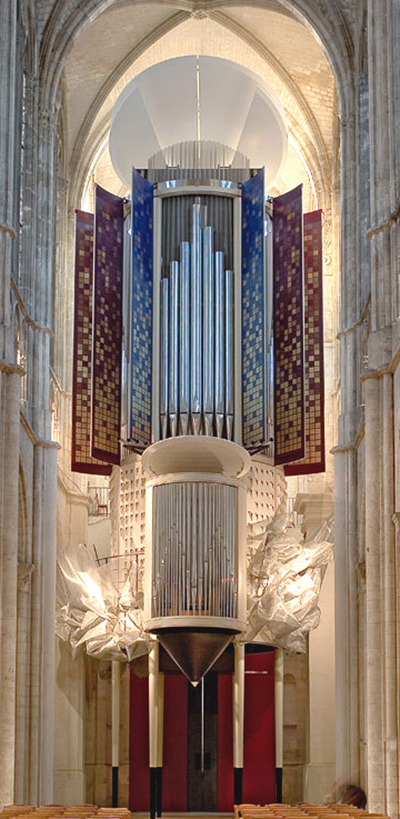
Finished in 2005, this instrument, unique because of its outside appearance, is the fruit of a complete collaboration between the architect Bruno DECARIS and our workshop. The initiative of the project returns to the State, contracting authority, with the very active local support of the association "AMORCE".
The case, just like the organization of the instrumental part, is breaking with the contemporary uses which, regarding the organ building, propose still today, historicizing solutions, as well for the case's architecture as for the instrumental style (the Neo-baroque, the neo-revival etc.).
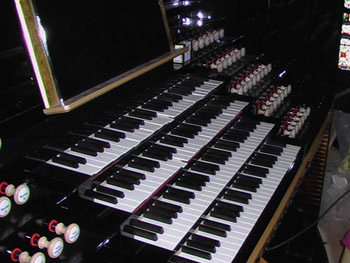
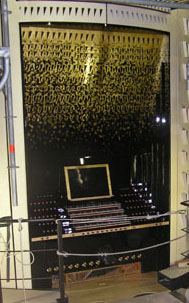
We can greet the daring of the case, designed by Mr B. Decaris, chief architect of the historical monuments, remarkable by its resolutely contemporary drawing, in break (very successfully) with the traditional architecture of organ cases.
(For more 'information, see the interviews de P. Quoirin et B. Decaris on the site :
http://orgues.evreux.free.fr/amorce/)
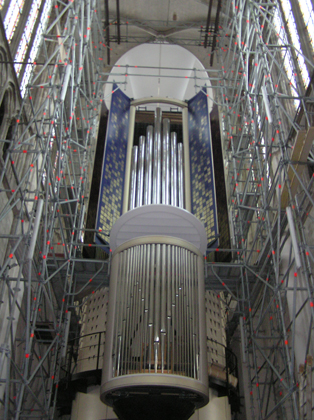
The musical project thus took shape, being inspired firstly by all the very rich literature of the 20th century and by the contemporary repertoire. The instrumental esthetic also distances itself from experiments of the neo-classic organ's style (from 1930 to 1970), which inspired so much the composers as Dupré, Messiaen, Duruflé, Jehan Alain etc.... it keeps however what was the base of this "hybrid" notion of organ to play everything : the big sound entities of Cavaillé-Coll built on the reed stops and foundation stops. The difference here is essentially in the work of voicing.
This musical conception of the organ attempts first and foremost to build a coherent work, in perfect adequacy with its own architecture and its integration in the narrow Gothic nave of the Cathedral (only 7 meters wide).
The length of this nave, acts as a kind of sound tunnel, resulting in a transept and a choir of the same length, but the vaults of which, higher, are surmounted by a lantern tower which is a terrible sound trap.
The whole ending with the third nave, lower, the chapel of "Mère Dieu".
This very particular architectural configuration thus brought us to imagine an organ case which can throw effectively the sound as far as possible. It is what justifies the presence of shutters acting as megaphone and abat-sons crowning the Grand-Organ and the "positif de dos".
Of this sound and visual freedom, the presence of the sound, transparent and supple, without useless strength, takes and wraps the listener in a " depth of harmony which impresses", to resume this beautiful turn of phrase used by Dom-Bédos de Celles, to speak about the organ of Saint-Martin of Tours, during his expertise in 1770, organ regrettably today destroyed.
"No more being in front of the sound but in the sound fluid. No more being in front of the organ but everywhere". With the architect Bruno Decaris, it was our objective. This instrument contributes certainly to give a new lighting to the modern musical repertoire. It proposes to the musicians the means to reveal in a way all the complexity and the power of the polyphonic writing.
Composition :
| Positif - 56 notes | Grand-Orgue - 56 notes | Récit expressif - 56 notes | Bombarde - 56 notes | Pédale - 32 notes |
| Montre 8' | Montre 16' | Gambe 8' | Bourdon 16' | Flûte 16' |
| Bourdon 8' | Montre 8' | Voix céleste 8' | Bourdon 8' | Flûte 8' |
| Prestant 4' | Prestant 4' | Flûte harmonique 8' | Gambe 8' | Prestant 4' |
| Flûte 4' | Quinte 2 2/3' | Flûte octaviante 4' | Flûte harmonique 8' | Grosse Quinte 10 2/3' |
| Doublette 2' | Doublette 2' | Prestant 4' | Flûte ouverte 4' | Grosse Tierce 6 2/5' |
| Nazard 2 2/3' | Doublure harmonique de la montre 8' de C2 à G5 | Octavin 2'
|
Grosse Tierce 3 1/5' | Bombarde 32' (acoustique) |
| Tierce 1 3/5' | Grande Fourniture 3 rangs | Nazard 2 2/3' | Gros Nazard 5 1/3' | |
| Larigot 1 1/3' | Fourniture 5 rangs | Tierce 1 3/5' | Cornet 5 rangs | |
| Plein-jeu 6 rangs | 1er Cymbale 3 rangs | Fourniture 3 rangs | Bombarde 16' | |
| Trompette 8' | 2ème Cymbale 2 rangs | Basson 16' | Trompette 8' | |
| Cromorne 8' | 1ère Trompette 8' | Trompette 8' | Clairon 4' | |
| 2ème Trompette 8' en chamade | Basson Hautbois 8' | |||
| Voix humaine 8' | ||||
| Clairon harmonique 4' |
Coupler Solo/Positive - Annulation G.O. - Machine Barker for Pos/GO - Solo/GO - Bombarde/GO
Pedalcoupler for I, II, III, IV
Electronic sequencer - Mecanical action for keyboards - Electrical stop action.
Action :
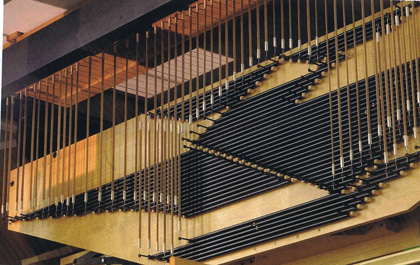
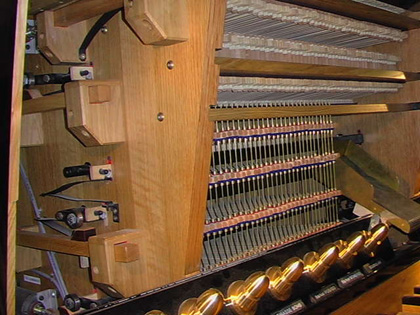
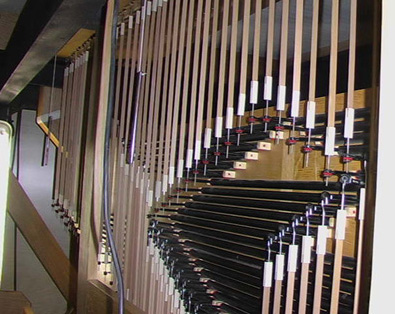
Mounting :
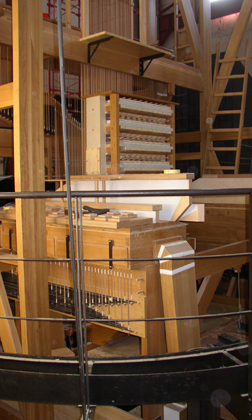
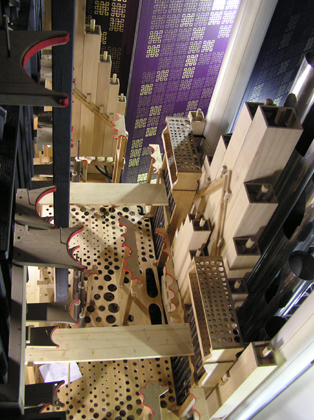
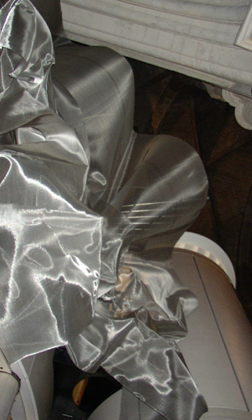
enregistrements audios:
Mozart, Reubke, Dupré, Alain, Messiaen - Lecaudey
Delor, Mabit, Leguay -Pascale Rouet